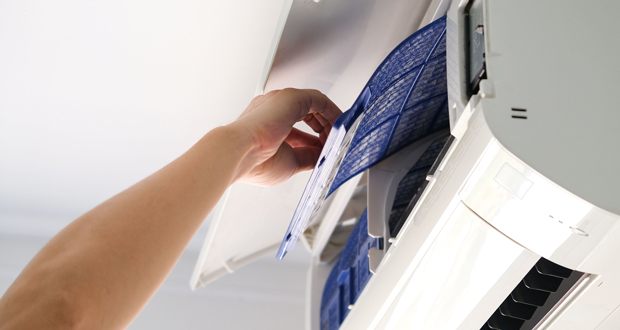With summer now in full swing and air movement systems working hard across commercial properties, there’s still time for facilities managers to take stock. Jerry Hall, Head of Technical Services – Air Conditioning at Climate Centre, offers a timely reminder of essential HVAC maintenance checks that can keep systems running efficiently and avoid unexpected disruption.
It’s not just about compliance – it’s about continuity
We’d never let a fleet of vehicles run without regular servicing, so why treat our building systems any differently?
As air conditioning demand peaks across workplaces, schools, healthcare settings and retail environments, the pressure on systems increases. Without preventive maintenance, facilities risk higher energy bills, breakdowns, and uncomfortable working conditions. And in many environments, even a single failure can cause productivity dips, tenant complaints, or lost footfall.
Stay ahead of problems, not just regulations
Facilities teams are well aware of legal obligations: for example, AC systems over 12kW must be inspected every five years under the Energy Performance of Buildings (England and Wales) Regulations 2012 (updated 2020). There are also strict requirements under F-Gas legislation concerning refrigerant checks and leak management.
But box-ticking won’t protect your uptime. Manufacturers recommend proactive maintenance at least twice annually, especially during periods of heavy usage like now. Often, the warranty offered by manufacturers is reliant on the equipment being correctly maintained, and they will ask for confirmation of this before honouring warranty claims.
Mid-season HVAC tune-up: 5 must-do actions
If your systems haven’t been looked at since spring, these five quick interventions can reduce strain, boost efficiency, and head off avoidable problems.
- Change or clean filters
Filters collect dust and particulates, but once blocked, they restrict airflow and force the system to work harder. That means higher running costs and reduced performance. Cleaning or replacing them every few months is a fast, effective fix.
- Tidy up condenser & evaporator coils
Outdoor coils attract debris, dust, and pollen, especially in dry, busy environments. If left dirty, they inhibit heat transfer and increase the risk of overheating or failure. Always isolate power and use a suitable cleaner, following manufacturer guidance.
- Check refrigerant charge and compliance
Low refrigerant levels often indicate a leak, and F-Gas Regulations require these to be promptly fixed and recorded. Also confirm that the correct refrigerant is being used, especially in sites with legacy systems. It is important to keep an ‘Asset Register’ detailing the type, and amount of refrigerant in each system.
- Unblock drain lines & test condensate pumps
Clogged condensate drain lines can lead to moisture damage and system faults. Clear any buildup from the drain or test that the condensate pump is removing water properly and without obstruction.
- Inspect electrical components
Wiring faults or loose connections can cause intermittent issues or complete system failure. Make sure terminals are secure and use electrical testing to check components are operating within the right voltage and current range.
Reliable systems start with routine care
In a summer where cooling systems are often pushed to their limits, simple mid-season checks can mean the difference between consistent building performance and costly downtime. For facilities managers focused on energy use, compliance, and occupant satisfaction, there’s never a bad time to ‘tune up’ HVAC systems.





